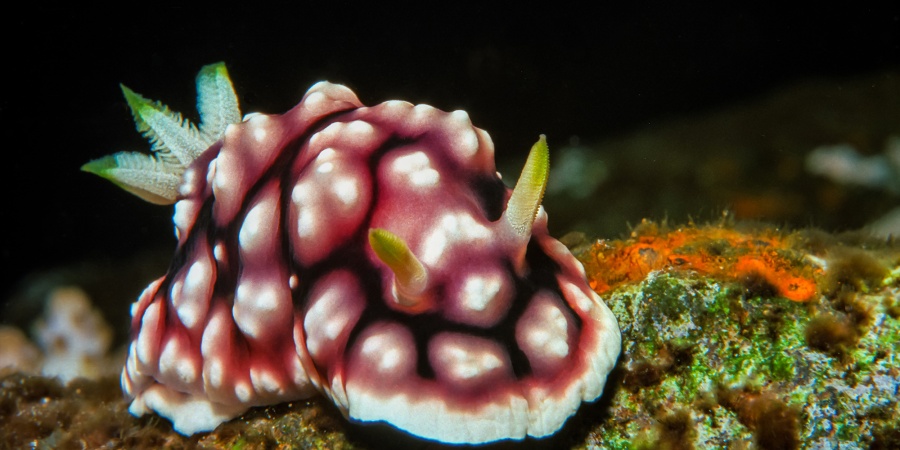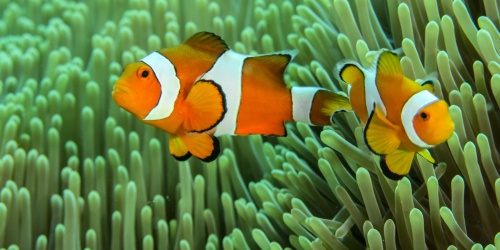
Nudibranch (Sea Slug) - Photo Jim / Adobe
What is a nudibranch or sea slug? Although the term 'slugs' conjures up all kinds of unpleasant ideas, nudibranchs (pronounced 'noo-dee-branks), more commonly known as sea slugs, are renowned for their boundless variety and beauty. Nudibranchs are gastropod molluscs.
What do they look like? Nudibranchs are shell-less molluscs, so imagine a colourful snail without a shell. Different species have a vast variety of body shapes and range from a few millimetres to 30 centimetres long. The word nudibranch is Latin and literally means 'naked gills'. The name refers to the circle of exposed gills on the back of many species.
Where do they live? Nudibranchs can easily be seen by observant divers in all of Western Australia’s marine parks. On reef walls or reef tops of Perth’s Marmion Marine Park, or other parts of south-western Australia, slender blue and orange nudibranchs (Chromodoris westraliensis) may nestle among an array of other invertebrates, such as sponges, on which some predate. Another common species at Marmion is a pink-spotted, bright orange nudibranch (Ceratosoma brevicaudaum). However, hundreds of species of nudibranchs have so far been recorded in Western Australian waters. Divers willing to investigate nooks and crannies can often spot species that have not yet been scientifically described.
What they eat and how: Nudibranchs are exclusively carnivorous, and, depending on the family and the species, often feed on a specific species of prey. Some species, for instance, feed only on mollusc eggs, others on a particular species of sponge.
Behaviour: With no shells for protection, nudibranchs have had to develop a vast armoury of alternative defences. Some species can produce a distasteful noxious secretion to deter potential predators, such as fish. Other species feed on sea anemones, hydroids, jellyfish, soft corals and hard corals and are able to store special stinging cells called nematocysts from these animals in their bodies. When attacked, they can discharge the stinging cells to deter their predators. Other nudibranchs use camouflage to avoid detection. Most nudibranchs have vivid colour patterns to advertise to predators that they are dangerous to eat.
Breeding: All nudibranchs are hermaphrodites, which means the animal acts as both a female and a male. Copulating pairs inject sperm into each other by a penis. Eggs are usually deposited by each individual in a coiled mass on underwater surfaces. A few species emerge from the egg as a crawling juvenile. However, most emerge as free swimming larvae, with a tiny remnant shell. These swim about in the water column until they are ready to settle on the bottom.
How you can protect nudibranchs: When diving or snorkelling, look at but don’t touch these soft-bodied animals.



























